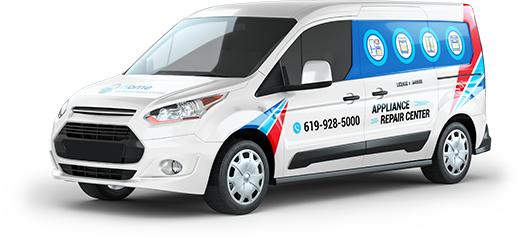Washing machines are one of the most reliable appliances in a household, but even the sturdiest of machines can encounter issues over time. Among the most common problems that homeowners face with washing machines are door-related malfunctions. Whether it’s a broken handle, a faulty door lock, or a hinge issue, problems with the door can disrupt your laundry routine and, in some cases, render the machine unusable. Understanding these problems and knowing how to address them is crucial for ensuring the longevity of your washing machine.
⠀
Common Problems with Washing Machine Doors
⠀
- Broken Door Handle
A broken door handle is one of the most common washing machine door issues. Washing machine handles are frequently used and subject to wear and tear. Over time, they can crack or completely break, making it impossible to open the door. When the handle is damaged, it needs to be replaced to regain full functionality.
⠀
Symptoms of a broken handle:
– Difficulty opening the door.
– The handle feels loose or comes off entirely.
⠀
Solution:
The handle replacement is usually straightforward and can be done with a few simple tools. In some cases, the door itself may need to be removed to access the handle mechanism. If you’re unsure or uncomfortable handling it yourself, professional technicians can quickly replace the handle, saving you time and effort.
⠀
- Faulty Door Latch
The door latch is responsible for ensuring that the door stays closed during the wash cycle. A faulty latch can lead to improper sealing, causing leaks or preventing the machine from starting. Most modern washing machines have safety mechanisms that won’t allow the machine to run unless the door is securely locked. A broken latch means the machine will not detect that the door is closed, resulting in an error message or failure to start.
⠀
Symptoms of a faulty latch:
– The door doesn’t close securely.
– The machine won’t start despite the door being closed.
– Water leaking from the door during the cycle.
⠀
Solution:
Fixing a faulty latch may involve replacing the latch assembly, which can be more complicated than replacing a handle. Professional service is recommended, as an improperly installed latch can lead to further problems.
⠀
- Damaged Door Seal
The rubber door seal (or gasket) forms a watertight barrier between the drum and the door. Over time, this seal can wear out, tear, or become moldy. A damaged seal not only leads to water leaks but can also allow dirt and debris to accumulate, reducing the machine’s efficiency.
⠀
Symptoms of a damaged door seal:
– Water leaks from the door.
– Visible cracks or mold growth on the seal.
– The machine has a bad odor.
⠀
Solution:
Replacing the door seal requires disassembling part of the door frame, which can be a tricky process for someone inexperienced with washing machine repairs. A trained technician can replace the seal efficiently, ensuring that your machine is watertight once again.
⠀
- Stuck Door
Sometimes, the washing machine door may get stuck and refuse to open. This can happen due to a variety of reasons such as:
– The machine is still full of water.
– The door lock mechanism is faulty.
– The control panel has detected an error that keeps the door locked as a safety precaution.
⠀
Symptoms of a stuck door:
– The door won’t open even after the cycle has finished.
– The machine still has water inside.
– The control panel shows an error code.
⠀
Solution:
In cases where the door is stuck, try draining the machine manually and resetting it. If this doesn’t work, the door lock mechanism or the control panel may need to be repaired or replaced. This type of repair often requires a professional diagnosis to ensure the right component is addressed.
- Faulty Door Lock
The door lock, also known as the interlock, ensures that the door remains closed during the wash and spin cycles. A faulty door lock can prevent the machine from starting or finishing its cycles. Sometimes, a failing lock can lead to the machine stopping mid-cycle, locking clothes inside the drum.
⠀
Symptoms of a faulty door lock:
– The machine doesn’t start.
– The machine stops mid-cycle and displays a door lock error.
– The door won’t unlock after the cycle finishes.
⠀
Solution:
Repairing a faulty door lock usually requires replacing the interlock mechanism. This involves working with the machine’s electrical components, so it’s best to leave this to a qualified technician.
⠀
When to Call a Professional
⠀
Washing machine door problems can vary in complexity. While some issues like replacing a handle may seem simple, others such as repairing a faulty door lock or latch often require professional intervention. Incorrect DIY repairs can worsen the problem and result in more expensive repairs down the line.
⠀
At Home Appliance Service Center, we specialize in washing machine repairs, including all door-related issues. Our experienced technicians can quickly diagnose the problem and provide the most cost-effective solution. We use high-quality replacement parts to ensure long-lasting repairs.
⠀
Why Choose Home Appliance Service Center?
⠀
– Expert Technicians: Our team consists of highly trained professionals who are experts in washing machine repairs.
– Fast Service: We understand how important your washing machine is, which is why we offer prompt and efficient service.
– Transparent Pricing: You’ll know the cost upfront with no hidden fees.
– Warranty: We stand behind our repairs, offering a warranty on both parts and labor.
⠀
If you’re dealing with any door-related issues with your washing machine, don’t hesitate to reach out to Home Appliance Service Center. We’ll have your machine up and running in no time. Contact us today for expert repairs and exceptional service!
⠀
Contact us
 619-928-5000
619-928-5000  Request Service
Request Service 
